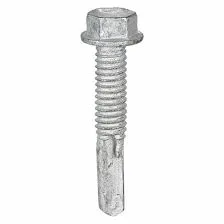shield bolts
Understanding Shield Bolts A Critical Component in Modern Engineering
In the expansive world of engineering and construction, certain components often go unnoticed, yet they play an integral role in ensuring the safety and integrity of structures. Among these unsung heroes are shield bolts, essential fasteners that serve particular functions in a variety of applications, from heavy machinery to civil engineering projects. This article delves into the significance of shield bolts, examining their design, applications, advantages, and best practices for use.
What are Shield Bolts?
Shield bolts, also known as expansion bolts or toggle bolts, are specialized fasteners designed to attach objects securely to concrete or masonry walls. The design of shield bolts allows them to expand when a bolt is inserted and tightened, which leads to a strong grip within the material. This unique feature makes them ideal for applications where traditional bolts may not provide sufficient holding power or stability.
The typical structure of a shield bolt consists of a metal bolt, a shield or sleeve, and a nut. The shield is placed inside a pre-drilled hole in the base material. As the bolt is tightened, the shield expands against the walls of the hole, creating a friction grip that resists pull-out forces. This mechanism makes shield bolts particularly valuable in construction scenarios where load-bearing capacity is paramount.
Applications of Shield Bolts
Shield bolts are commonly utilized in various applications across multiple industries. In construction, they are frequently employed to mount fixtures, brackets, railings, and structural elements to concrete or brick walls. Their robust design enables them to bear substantial loads, making them suitable for heavy-duty applications.
In the infrastructure domain, shield bolts play a vital role in securing components like guardrails, signage, and lighting fixtures. They are also utilized in mechanical installations, such as hanging ductwork or HVAC systems, where secure fastening is critical for operational safety.
Additionally, shield bolts are prevalent in the realm of manufacturing and assembly lines, used to attach machinery or components to concrete surfaces. Their reliability under various environmental conditions, including moisture and temperature variations, further enhances their applicability.
Advantages of Shield Bolts
shield bolts

One of the primary advantages of shield bolts is their exceptional load-bearing capacity. The expansion mechanism ensures a secure hold within concrete and masonry, providing peace of mind for engineers and builders. Moreover, installation is relatively straightforward, requiring minimal tools and expertise, which can lead to time and cost savings during construction projects.
Another significant advantage is the versatility of shield bolts. They come in various sizes and designs, making them suitable for an extensive range of applications. Whether securing lightweight fixtures or heavy industrial equipment, there's a shield bolt option that fits the requirements.
Furthermore, shield bolts are resistant to vibration, making them ideal for applications in dynamic environments where movement and stress may compromise other fastening methods.
Best Practices for Using Shield Bolts
To maximize the effectiveness of shield bolts, certain best practices should be followed during installation. First, it’s crucial to select the appropriate size and type of shield bolt for the specific application. This involves considering the load requirements and the material of the structure.
Next, precise drilling is essential. A clean, straight hole suited to the shield bolt's specifications ensures optimal expansion and grip. It’s also important to follow the manufacturer’s guidelines for tightening the bolts, as over-tightening can lead to stripping or damaging the bolt, while under-tightening could compromise the integrity of the hold.
Periodic inspection of shield bolts in service is also advisable. Checking for signs of wear, corrosion, or loosening can prevent future failures and maintain safety.
Conclusion
In conclusion, shield bolts may not be the most glamorous components in the engineering toolbox, but their role in providing secure and reliable fastening solutions cannot be understated. Understanding their design, applications, and advantages is vital for engineers, builders, and anyone involved in construction or mechanical assembly. By adhering to best practices for installation and maintenance, the longevity and effectiveness of shield bolts can be ensured, contributing to the overall safety and stability of structures. As technology and engineering practices continue to evolve, shield bolts will undoubtedly remain a cornerstone of secure fastening solutions.
-
Weatherproof Plastic Expansion Anchors for OutdoorNewsJun.06,2025
-
Sustainability in the Supply Chain: Eco-Friendly TEK Screws ProductionNewsJun.06,2025
-
Load-Bearing Capacity of External Insulation FixingsNewsJun.06,2025
-
Double Head Bolts: Enhancing Efficiency in Industrial MachineryNewsJun.06,2025
-
Corrosion Resistance in Chipboard Screws: Coatings for Wholesale DurabilityNewsJun.06,2025
-
Butterfly Toggle Bolts : Enhancing Structural ResilienceNewsJun.06,2025
